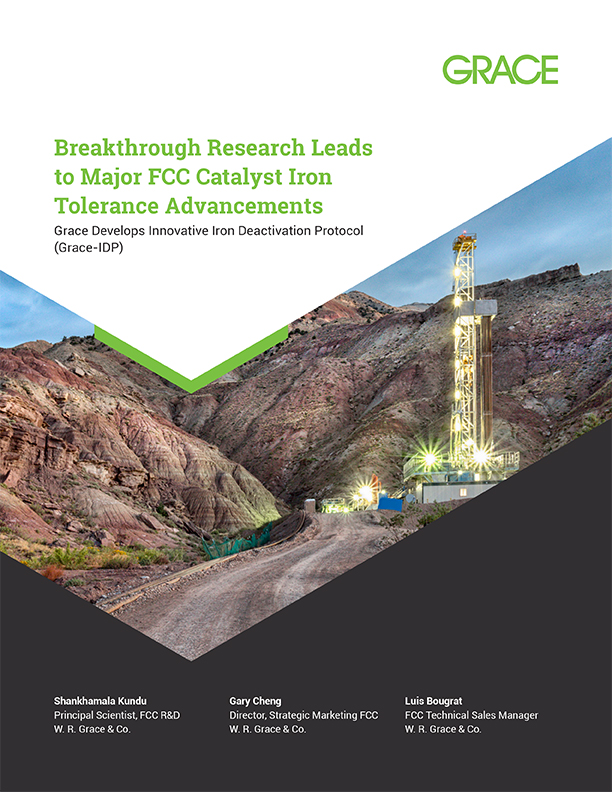Resid Conversion
Refiners are finding it more and more economically attractive to process heavy crudes. To maximize profitability, FCC units are run up against as many operating constraints as possible. Use of appropriate catalysts provides a convenient and economically attractive route to relieve operating constraints – thereby achieving significantly higher profitability from the FCC unit.
Proper catalyst design is critical to minimize coke formation, as well as to limit the deactivation caused by contaminant metals and hydrothermal attack. Grace continues to innovate to tackle the pressures faced by the refining industry, and to allow the profitable processing of ever changing and more challenging feedstocks around the globe.
Coke Selectivity
For resid operations, optimal design of the FCC catalyst is critical. Minimizing diffusional limitations for the large molecules found in vacuum residue is an important consideration in the design of resid catalysts, but coke selectivity remains paramount. These units processing resid are impacted by high levels of contaminant metals and Concarbon and are often limited by air blower capacity and/or regenerator temperatures, making coke selectivity the most important catalyst performance characteristic. Coke selectivity determines the FCC unit conversion level at a given set of conditions, and improvements in coke selectivity have the greatest value to the refiner. Improvements in coke selectivity can allow the refiner to:
- increase feed rate,
- increase conversion, or
- process heavier, less expensive feedstocks,
all of which enable an economically attractive operation increasing profit margins.
Bottoms Cracking
To increase bottoms destruction, Grace catalyst allows the inclusion of a high degree of our signature mesoporosity as well as an increased amount of macroporosity, to extend the range of benefits that can be delivered by our catalyst solutions:
- Unique catalyst design balances matrix and zeolite activities to deliver superior performance.
- The right amount of mesoporosity and macroporosity are key for optimal diffusion and cracking of heavy resid molecules.
Best-in-Industry Metals Tolerance
Contaminant metals from the feedstock, such as Ni or V can have detrimental effect on catalyst performance and selectivity. Therefore having a catalyst with high metals tolerance mitigates the effect of these metals and enables refiners to process heavier feedstocks with elevated contaminant metal content.
- Hydrogen is the major contributor to dry gas yield. Due to the inherent Ni tolerance of Grace’s resid catalysts, considerably less hydrogen is produced.
- Vanadium causes a severe, permanent deactivation of the catalyst via zeolite degradation. Its effect increases with increasing regenerator temperature. Although vanadium is not a strong dehydrogenation catalyst, it increases the hydrogen make as well.

